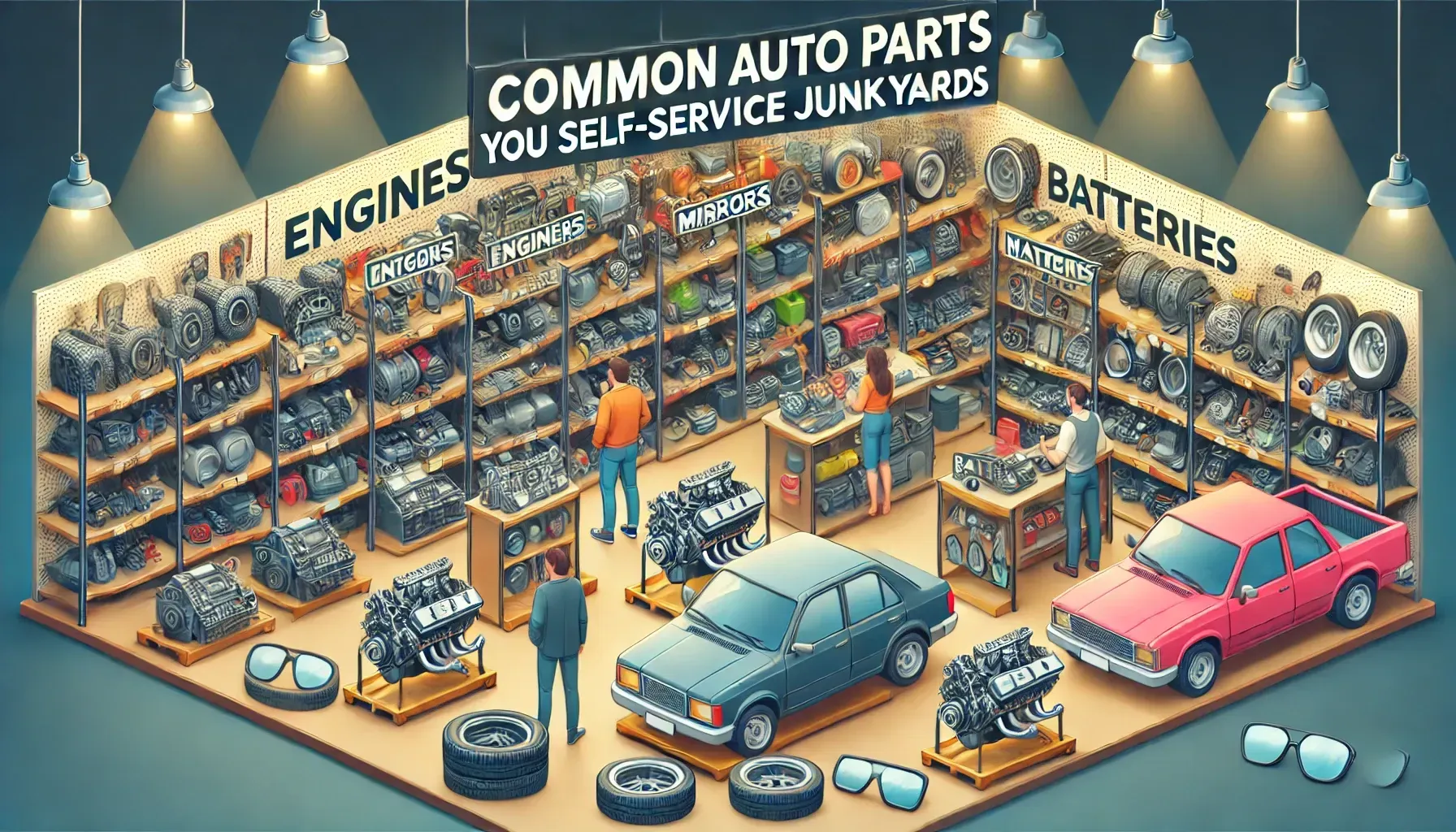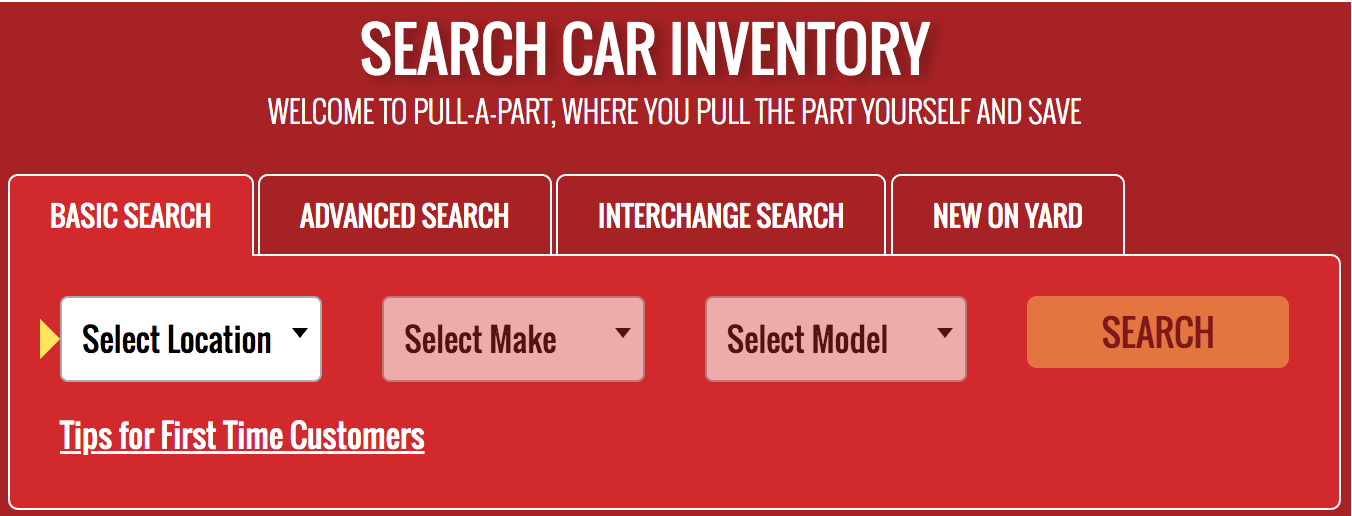Buying Used Cars at Junkyards: How to Spot Quality and Avoid Pitfalls
Find a Local Junkyard
ALABAMA
ARIZONA
COLORADO
FLORIDA
GEORGIA
INDIANA
KENTUCKY
LOUISIANA
MISSISSIPPI
NEW MEXICO
NORTH CAROLINA
OHIO
PENNSYLVANIA
SOUTH CAROLINA
TENNESSEE
TEXAS
Junkyards might not be the first place that comes to mind when shopping for a used car, but savvy buyers know these hidden gems can offer standout deals at a fraction of the usual cost. Beyond the towering rows of vehicles waiting to be salvaged, you’ll often find perfectly drivable options that just need a little TLC. From vintage classics to family-friendly sedans, there’s an ever-changing array of possibilities. What makes these junkyard finds so appealing? In short, lower overhead means more attractive prices—plus, the thrill of uncovering an unexpected treasure. This blog will show you how to spot reliable cars hidden among the heaps and walk away with confidence, armed with the knowledge you need to avoid all-too-common pitfalls and ensure you’re driving off with a worthwhile purchase.
Summary
Our blog’s unmatched blend of expert insights, comprehensive inspection strategies, and proven negotiation tactics ensures you confidently uncover and secure reliable junkyard cars with ease.
- • Junkyards can offer significant savings and rare car finds.
• Thoroughly inspect exterior, interior, and engine for structural or mechanical issues.
• Verify paperwork, including a clear title, to avoid legal complications.
• Run a VIN check for collision or flood history.
• Negotiate confidently using market research and identified repair costs.
• Conduct a final test start or quick mechanical review before purchase.
• Secure all necessary legal documents to protect your investment.
Understanding the Junkyard Advantage: Your Key to Budget-Friendly Car Deals
One reason many thrifty car enthusiasts choose to explore junkyards is the notable cost advantage. Traditional dealerships have sizable overhead—showrooms, marketing budgets, and sales commissions—that ultimately trickle down to the final price you pay. Junkyards, on the other hand, focus on salvaged or abandoned vehicles, which significantly reduces operational costs. As a result, these savings can translate to lower purchase prices for buyers. If you’re willing to put in some research and legwork, discovering a junkyard gem can yield a dependable car at a fraction of the standard market rate. Another benefit is the possibility of finding unique models or rare parts that have become scarce elsewhere. Junkyards often carry an eclectic assortment of vehicles, including discontinued makes and older classics. If you’ve been searching for that elusive vintage car or a specific part, a junkyard can be a treasure trove. In many cases, you may even be able to purchase an entire vehicle cheaply, then salvage the parts you really need. This flexibility offers a tailored opportunity to save money while acquiring exactly what fits your needs. Despite these perks, there are some drawbacks to consider. While a junkyard can help you snag a bargain, it’s not guaranteed that every car on the lot will be worth the investment. Some vehicles might require extensive repairs, while others may have undisclosed issues only discoverable through a thorough inspection. The onus is on you to check for signs of rust, damage, or neglect. Without the safety net of a comprehensive warranty, you assume more risk if you buy a vehicle that’s ultimately unsalvageable. Yet, with careful scrutiny and a bit of expertise, you can usually weed out the duds and focus on the cars that show genuine promise. Finally, keep in mind that research is key. Knowing the market value of the car you’re considering helps you negotiate effectively. If you have an idea of the vehicle’s true worth in its current condition, you’ll be in a better position to make a fair offer. Armed with knowledge about typical mechanical problems and parts availability, you’ll also gain the confidence to spot potential warning signs and avoid money pits. By balancing risks with rewards, and cost savings with careful vetting, you can make a junkyard purchase work in your favor—securing reliable transportation without breaking the bank.
Key Inspection Points: What to Look for Before You Buy
Begin with a thorough exterior check to identify any structural red flags. Look for signs of rust around the wheel wells, under the doors, and beneath the hood—these areas are most prone to corrosion. If you spot minor dents or paint scratches, those might not be deal-breakers. However, deep structural damage or large sections of rust could signal an expensive future repair. Pay special attention to panel alignment, making sure doors, hood, and trunk close firmly without gaps. Misaligned panels can indicate a past collision, which may affect the car’s overall performance and safety. Next, examine the interior for damage and wear. Check that seats adjust properly and upholstery isn’t torn in crucial spots. Give the dashboard a once-over to confirm all gauges and indicators work. If you can, power on the electrical components to ensure the headlights, signals, and windshield wipers are functional. Any evidence of water damage—such as a musty smell or stained flooring—could mean the car’s been exposed to severe flooding. Don’t forget to pop the hood and scan for fluid leaks around the engine. Foamy oil, cracked belts, or corroded battery terminals might indicate larger mechanical problems down the line. Finally, if the junkyard allows it, try starting the car or at least hearing the engine crank. Listen for unusual rattles, squeals, or knocks, and check for excessive smoke from the exhaust. Even a brief run can reveal hidden issues, like a failing alternator or a misfiring cylinder. When combined, these inspection steps offer a revealing glimpse into a vehicle’s true condition, minimizing the risk of walking away with a lemon. By performing this quick yet thorough examination, you’ll set yourself up for a more confident—and more successful—used car purchase.
Paperwork and Documentation Essentials: Protecting Your Investment
Title status often goes overlooked in the heat of a bargain hunt, but it’s one of the most critical aspects of a junkyard purchase. Before finalizing any deal, confirm that the title is clean and free of liens. In practical terms, this means verifying that no financial institutions or private lenders still hold a stake in the vehicle. If the seller can’t provide evidence of a clear title, consider that a warning sign. A murky title can be extremely time-consuming—and expensive—to rectify later. Equally important is running a thorough check of the car’s background using its vehicle identification number (VIN). This report can reveal invaluable information, such as whether the car has been in a serious collision, was labeled as salvage, or suffered water damage in a flood. Vehicles that have endured severe structural harm might show only subtle traces on the outside, but they can hide serious mechanical or safety issues. If anything seems off, don’t hesitate to ask questions or step away from the deal if answers aren’t satisfactory. Finally, take a moment to review any records or receipts the junkyard might offer. This might include basic maintenance logs or evidence of part replacements. Although not every junkyard vehicle will come with documentation, even a single record suggesting regular servicing can give you more confidence in your buy. The extra effort spent verifying these key details can prevent unpleasant surprises, such as legal disputes or unexpected repair bills. By arming yourself with all the right paperwork, you ensure that your investment remains protected long after you drive your newly purchased junkyard find off the lot.
Negotiating and Finalizing Your Purchase: Strategies for Success
A strategic approach is critical when you’re ready to negotiate the final price on a junkyard car. Begin by researching the vehicle’s approximate market value in its current condition, comparing similar listings from other junkyards, online marketplaces, and local ads. Keep a note of any necessary repairs or part replacements the vehicle may need; these can be solid bargaining points when you’re discussing the price. When speaking to the junkyard owner or manager, politely but firmly present your findings, underlining the estimated costs of getting the car road-ready. If you’ve uncovered significant flaws during inspection, use them as leverage to lower the asking price. After establishing a fair purchase amount, focus attention on confirming the car’s mechanical viability. If the junkyard permits, try a final test start or at least listen to the engine idle. Look for persistent engine warning lights on the dashboard, check that the alternator is functioning, and remain alert to any suspicious knocking or grinding noises. If possible, bring a trusted mechanic or knowledgeable friend along to verify any last-minute concerns. Once you feel confident in the car’s overall condition, proceed with the paperwork. Double-check you have a clean title, bill of sale, and all necessary legal documentation. Before you seal the deal, remember that your best defense against unexpected issues is being thorough and asking clear questions. By balancing patience, research, and a solid understanding of worth, you’ll leave the junkyard with a vehicle you feel good about—at a satisfying price.
Share your best junkyard finds and subscribe for insider tips on affordable car deals!
By applying these tips—thorough inspections, verifying essential paperwork, and solid negotiation techniques—you’re poised to make a smart junkyard purchase. Carefully check the exterior for rust or damage, test the engine if possible, and confirm the car has a clear title. A VIN check provides an extra layer of reassurance, highlighting any potential dangers like flood or collision history. Armed with research on market values and typical repair costs, you’ll also have the confidence to negotiate a fair price. Best of all, junkyards can be gold mines for those seeking overlooked bargains or hard-to-find models. By staying mindful of common pitfalls and remaining patient in your search, you’ll transform a once-daunting experience into a rewarding path to reliable, affordable transportation.




